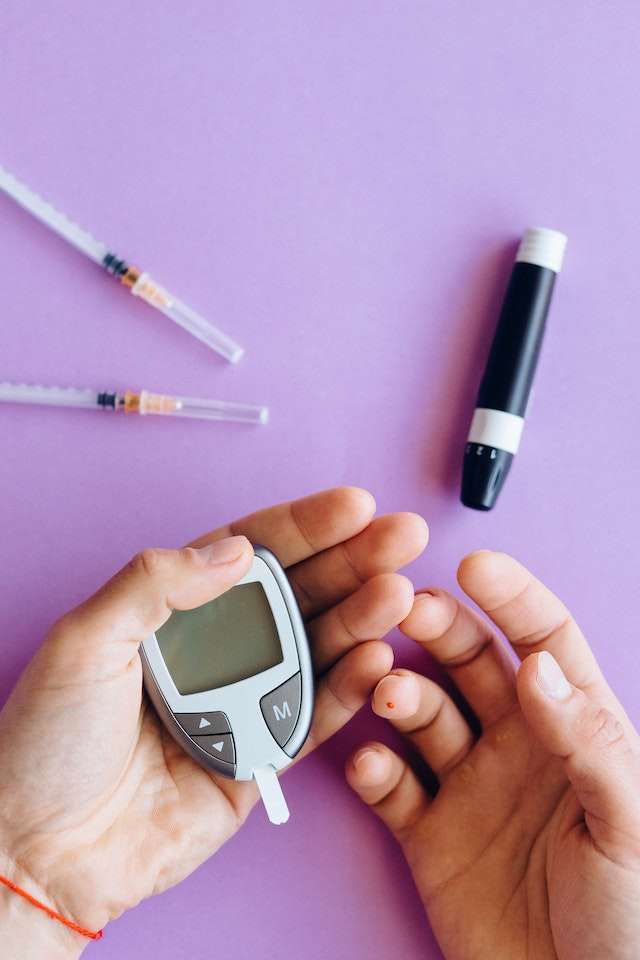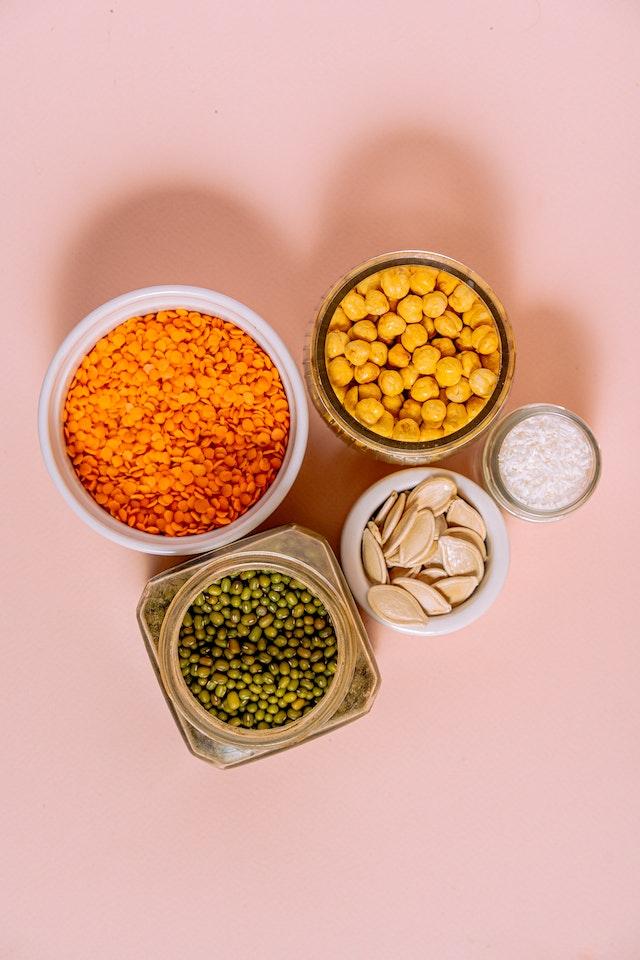Others

Why a Diabetes Supplies Bag is a Game-Changer for Managing your Health
As a person living with diabetes, one of the biggest challenges you face every day is the need to stay organized and ensure that you have all the necessary supplies at hand. This is where a diabetes supplies bag can prove to be a true game-changer in helping you manage your health effectively. In this article, we will discuss why a diabetes supplies bag is essential and how it can help you take control of your diabetes.
Firstly, let’s understand what a diabetes supplies bag is. Simply put, it is a bag or a pouch that contains all the essential supplies that people with diabetes need to manage their condition on a daily basis. These supplies may include insulin pens, glucose meters, test strips, lancets, alcohol swabs, glucagon kits, and even snacks for managing low blood sugar.
Now, you may be wondering why you need a separate bag when you can easily carry all these items in your regular bag or pockets. The answer is simple – organization and convenience.
When you have a dedicated diabetes supplies bag, you can keep all your supplies together in a neat and organized manner. This ensures that you don’t waste time and energy hunting for individual items when you need them the most. Additionally, a dedicated bag reduces the risk of losing or misplacing your supplies, which can be disastrous for your health.
Moreover, a diabetes supplies bag provides convenience and peace of mind. When you leave your house or travel, you can easily grab your bag containing all your supplies and medications. This reduces the chances of leaving behind important items and running the risk of an emergency.
Benefits of a Diabetes Supplies Bag
Let’s now talk about the benefits of a diabetes supplies bag.
1. Reduces stress and anxiety
Living with diabetes can be stressful and overwhelming, especially when you have to constantly track your blood sugar levels and manage your medications. A diabetes supplies bag helps you stay organized and keeps all your supplies in one place. This reduces stress and anxiety and helps you focus on your health goals.
2. Helps you maintain healthy habits
A diabetes supplies bag contains all the necessary supplies you need to monitor your blood sugar levels and manage your medications. This helps you maintain healthy habits and ensures that you don’t miss any crucial doses or readings.
3. Increases independence and confidence
A diabetes supplies bag empowers you to take control of your health and increases your independence and confidence. With all your supplies in one place, you don’t have to rely on others to manage your medications or supplies.
4. Facilitates better communication with healthcare providers
A diabetes supplies bag makes it easy to communicate with your healthcare providers. You can easily take your bag containing all your supplies and medications to your appointments, which helps your healthcare provider get a better understanding of your condition and evaluate your progress.
5. Saves time and energy
A diabetes supplies bag saves time and energy by keeping all your supplies organized and readily accessible. This eliminates the need to rummage through different bags or pockets to find individual items, which can waste valuable time and energy.
6. Helps you avoid emergencies
A diabetes supplies bag equipped with emergency supplies can help you avoid emergencies. You can include items such as a glucagon kit and snacks to manage low blood sugar. Having these items readily available can help you avoid potentially dangerous situations.
Tips for Choosing the Right Bag
Now that you understand the benefits of a diabetes supplies bag, let’s talk about some tips for choosing the right bag.
1. Look for a bag that is spacious and organized
Choose a bag that has enough compartments and pockets to keep all your supplies organized. This reduces the risk of misplacing important items and helps you find what you need quickly.
2. Choose a bag that is easy to carry and visually appealing
Look for a bag that is easy to carry and visually appealing. You want a bag that you’re comfortable carrying around and that makes you feel good about yourself.
3. Choose a bag that is durable and easy to clean
Essential Items to Keep in a Diabetes Supplies Bag
Living with diabetes means that it’s important to always be prepared for any related medical emergencies. A key element of this is having a diabetes supplies bag with all the essential items you need to stay safe and healthy.
Here are some common items to keep in your Diabetes Supplies Bag:
1. Insulin
- Insulin is a hormone that helps the body regulate glucose, or blood sugar. Insulin dosage is often managed with a pump, a device that injects insulin into the body as it monitors glucose levels. A diabetes supplies bag should contain different dosages of insulin for pumps, and a syringe for manually injecting insulin, in case of emergencies.
2. Glucose Tablets
- In cases of a sudden drop in blood sugar level, glucose tablets are a must-have in diabetes supplies bags. They are small, easy to carry and can be quickly ingested for an instant boost of energy.
3. Ketone Strips
- Ketone strips are used to measure ketone levels in the body, providing useful information about a person’s diabetes management. A diabetes supplies kit should contain test strips designed to measure ketone levels.
4. Hypo Treatment
- Hypo treatments are snacks or drinks used to quickly raise a person’s blood sugar levels. A diabetes supplies kit should always have hypo treatments that are easy to carry and quick to consume, such as juice or chocolate.
5. Glucose Meter
- Glucose meters measure the amount of glucose present in the blood and allow people to keep close track of their glucose levels. The meter should be included in the diabetes supplies bag in case the person needs to reference their levels away from home.
6. Medical Identification
- People living with diabetes should always carry some type of medical identification on them. A diabetic supplies bag should contain an ID card, bracelet or necklace that indicates the person is diabetic, in case of emergency.
7. Insulin Pen Needles
- Insulin pen needles are critical to managing a diabetes supplies bag. The needles should be kept in the bag and replaced at least once a month.
8. Sharps Container
- The sharps container is a thick, puncture resistant container used to safely store used insulin pens, needles and syringes. The insulin supplies bag should always include a sharps container to store discarded materials.
9. Glucose Gels
- Glucose gel is a type of hypo treatment sold in tubes or single-serve sachets that can be quickly ingested if a person is experiencing a hypoglycemic attack. The gel should be included in the diabetes supplies bag in case of emergency.
10. Syringes
- Syringes are often used in place of insulin pens, and may be required to administer insulin manually. The diabetes supplies bag should contain at least one or two syringes in case the person needs to inject insulin manually.
11. Other Considerations
- In addition to the items listed above, diabetes supplies bags should also include any additional items a person with diabetes may need. These can include rubber gloves, alcohol pads, glucagon kits, insulin vials and sterile water. Any other items that are recommended by a doctor should also be included in the diabetes supplies bag.
Conclusion
Living with diabetes means it is essential to always be prepared for the unexpected. By having a diabetes supplies bag and keeping it stocked with all the essential items a person needs to manage their condition, they can feel safer and more confident in their health. This comprehensive guide can help you make sure your diabetes supplies bag is well stocked and ready to go!
Choose a bag that is durable and easy to clean. A diabetes supplies bag is likely to be used frequently and may come into contact with spills and other contaminants. A durable and easy-to-clean bag will ensure that your supplies remain safe and hygienic.
By choosing the right bag, you can take control of your health and live with confidence and independence.

Diabetic Gifts
Are you searching for the ideal diabetic Christmas gift for a friend or family member who has the disease? There is no need to search further.
The list of my favorite diabetic presents, which I believe are appropriate for any occasion, is provided below. You should think about whether people with diabetes would value a gift before making any purchases for them.
Theoretically, you may give someone who has diabetes any gift in the world. Still, occasionally it is fun to find something themed, humorous, and practical for the disease.
All of the items I have listed below that are diabetic-themed are things I truly like and would love to get because I appreciate all presents. I have divided these wonderful gifts into various themed groups to make it easier for you to find what you are looking for.
Wherever it was possible, I have also included links to products, albeit some of them might not be accessible in all nations.
Practical Diabetes Gift
On the market, there are a ton of pretty cool tools, gizmos, and gadgets that make a living with diabetes simpler or more fashionable. I will go over some of the best in the section below.
Myabetic Cherise Diabetes Handbag
In terms of fashionable and useful bags for people with diabetes, Myabetic is a front-runner. There is something for everyone, and to be really honest, they have made a product that actually encourages you to take all of your diabetic supplies with you in style.
Even evening-wear bags for those romantic nights are available, along with bags for traveling with diabetes and elegant backpacks. You may see some of my favorites in the list below.
Myabetic Marie Diabetes Crossbody
This is a really fashionable purse that is ideal for days when you are going out for coffee with friends, exploring a new city, or on a special date or occasion. The black version is my favorite because it complements every outfit. All of your diabetes supplies, including your blood glucose meter, CGM receiver, and insulin, are hidden in compartments in it. It can also serve as a bag, holding items like your phone, wallet, and lipstick. The ideal handbag for women! Particularly when passing through airport security.
Myabetic Banting Diabetes Supply Case
You can be sure to discover a color for this classic case that fits your style and personality because it is available in so many distinct hues. If you have diabetes and travel, this is a great everyday gift for your supplies because it fits comfortably in a larger luggage or backpack.
Additionally, it can accommodate a variety of items, including test strips, a blood glucose meter, two insulin pens, syringes, and insulin vials. Additionally, it is a fantastic alternative for both men and women of all ages due to its style and color scheme.
Myabetic Edelman Diabetes Backpack
Personally, I like this the best. It is a terrific method to combine diabetes and style because it is really fashionable, available in a variety of colors, and simply all-around great. I adore its intelligence and the fact that I can never tell it is holding medical goods.
This diabetes gift also contains a front area that can hold your critical diabetes testing supplies, such as a glucose meter, test strips, insulin pens, and vials. It also has an internal pocket that is insulated, so you can put a cold pack inside to keep your insulin cool.
What a wonderful thing! Although this item is probably the costliest in the store, I believe it is totally worth the cost, given the quality, elegance, and convenience you receive. Additionally, I think this is fantastic for young people who might feel a little self-conscious about having diabetes.
Sugar Medical – Insulated Diabetes Sling Backpack
While ladies can certainly use it, it appears like this bag was designed with males in mind. The bag is the ideal backpack that you may carry on sports days, runs, or even hiking. It comes in a variety of fantastic colors.
Additionally, this diabetic gift basket contains an insulated compartment for juice boxes, glucagon, a cold pack, or a water bottle, in addition to holding all of your necessary diabetic supplies like testing strips, lancets, insulin, and many more.
When you are out and about, taking long walks, or just traveling in general, Frio, an insulin cooling case, is a terrific method to keep your insulin cool. It is a terrific, practical concept because it is also the kind of item you frequently forget to buy. You are guaranteed to discover one that someone will adore as a present because they are available in a wide range of sizes and designs.
Diabetic Accessories
You may spruce up your diabetic devices with the various attractive stickers that are readily available today. They do not have to be monotonous any longer. Use one of several incredibly cool designs to express yourself.
Take a look at some of the below-listed accessories for the following gadgets:
• FreeStyle Libre
• Type 1 Tactical Insulin Pump Holster (Medtronic)
• Dexcom
Birthday Gifts for Diabetics
I have ideas for humorous novelty gifts relating to diabetes if you want to buy a loved one or friend. Your loved one with diabetes is sure to like these and they make fantastic birthday presents.
Younger boys and girls who need a little encouragement to know they are brave and amazing will love receiving this. It is quite entertaining and enjoyable because unicorns are featured on it. Offered in five different hues.
• Zombies Ate My Pancreas Shirt
A diabetes awareness shirt that sells well. Available in six colors and for both men and women.
• A Novelty Mug
Classic diabetes statements can be found on a ton of amazing mugs that are currently available. If I had enough space, I might start a collection. Below is a list of some of my favorites. To give a friend, they are wonderful, straightforward gift. “Be nice to diabetes, we deal with enough pricks already.”
• “Proud Owner of a Useless Pancreas“
• “I’m Not Drunk I’m Diabetic“
• “Dear Diabetes, You Picked the Wrong Bitch”
A foot massager of some kind might be a good idea to help maintain those feet healthy and ease any discomfort caused by neuropathy since people with diabetes are prone to foot problems if complications with their blood sugars occur over an extended period of time. There are several options available that will fit all price ranges.
However, I believe that the TheraFlow Foot Massager Roller is both cool and affordable. This is a fairly amazing approach to help if you’re looking for gifts for those with diabetic neuropathy.
• A good book
There are a ton of books on blood sugar control and diabetes that are available. Some of the most well-liked diabetic books available are listed below: –
• The Diabetes Diet
• The Complete Diabetes Cookbook
• Diabetes Meal Planning and Nutrition for Dummies
• Complete Diabetes Guide
• Even Superheroes Get Diabetes – Insulin comic for kids
Diabetic Gifts for Men
The perception is that men are generally a little trickier to buy for. There are goods available that are suitable for men as well, despite the fact that the market for diabetic accessories appears to be geared toward women.
• Fitbit Charge 5 – Made for men with busy lifestyles and who love fitness
• Divoti Sport ID Medical Alert Bracelet
• Men’s Diabetic Outdoor Alpaca Socks
Frequently Asked Questions
Is a fruit basket a good gift for a person with diabetes?
Apples, pears, oranges, and other citrus fruits, as well as peaches, apricots, and nectarines, are your best choices. A simple fruit basket can be elevated to the status of a remarkable present by adding unusual types of any of these, or at the very least, a variety of colors and forms.
How do you cheer up someone with diabetes?
You cannot cure the sickness, but there are many ways you may provide kindness, support, and support.
• Do not nag!
• Encourage healthy eating
• Attend a diabetes support group with them
• Offer to attend doctor appointments
• Be observant of drops in blood
• Exercise together
• Be positive
Are nuts good a good gift for people with diabetes?
For people with diabetes, nuts are an excellent choice for a snack since they offer the best of all worlds: low in carbohydrates, high in protein, fiber, and good fats, and they make you feel full.
Is sugar-free chocolate good for people with diabetes?
Despite the fact that there isn’t a distinct “diabetic chocolate,” “sugar-free chocolate” usually refers to chocolate that has been sweetened using calorie-free or low-calorie sugar replacements. Since these alternatives have no effect on blood sugar, they are typically safe for people with diabetes.
What can I put in a diabetic gift basket?
Apples, pears, oranges, and other citrus fruits, as well as peaches, apricots, and nectarines, are your best choices. A simple fruit basket can be elevated to the status of a remarkable present by adding unusual types of any of these, or at the very least, a variety of colors and forms.

The Difference Between Type 1 and Type 2 Diabetes
Despite having names that sound similar, type 1 and type 2 diabetes are two separate illnesses with distinctive causes.
Type 1 diabetes and type 2 diabetes are fundamentally distinct from one another since type 1 is thought to be brought on by an autoimmune response and manifests in infancy.
Long-term lifestyle variables like inactivity and obesity are linked to the development of type 2 diabetes, which occurs over a number of years. The diagnosis is typically made in adults.
However, family history may be important. Type 1 diabetes risk factors are not completely understood.
Causes Of Type 1 Diabetes
The immune system of the body defends against outside intruders, such as dangerous germs and viruses.
• It is thought that an autoimmune response is what causes type 1 diabetes. When a person has type 1 diabetes, their immune system misidentifies healthy cells from their body as foreign invaders.
• The insulin-producing beta cells of the pancreas are attacked by and destroyed by the immune system. The body is unable to manufacture insulin if these beta cells are gone.
Why the immune system occasionally targets the body’s cells remains a mystery to researchers. It might be influenced by genetic and environmental elements, such as virus exposure.
There is a continuous investigation into autoimmune illnesses. Type 1 diabetes is not brought on by diet or way of life.
Causes Of Type 2 Diabetes
- Insulin resistance is a complication of type 2 diabetes. Although the body continues to manufacture insulin, it is unable to utilize it efficiently.
- Although there are a number of lifestyle factors, such as being sedentary and being overweight, that may be involved. Researchers do not yet fully understand why some people develop insulin resistance while others do not.
- Additional genetic and environmental factors might also be important. Your pancreas will attempt to make up for this by generating more insulin if you acquire type 2 diabetes. Glucose builds up in your bloodstream as a result of your body’s inability to utilize insulin properly.
How Does Diabetes Affect the Body?
Type 1 and type 2 diabetes are the two most common varieties.
• Each kind of diabetes is a chronic illness that interferes with your body’s ability to control blood sugar or glucose levels. Your body’s cells run on glucose for fuel, but glucose needs a key to get into your cells. That key lies in insulin.
• Insulin production is absent in those with type 1 diabetes. It is comparable to being locked out.
• In the later stages of the disease, type 2 diabetics frequently produce insufficient insulin and do not respond to insulin as well as they should. It’s comparable to having a key that is broken.
• Chronically high blood sugar levels are a risk for both types of diabetes. Diabetes problems are now more likely as a result.
What Are the Risk Factors for Type 1 And Type 2 Diabetes?
Type 1 diabetes risk factors are less understood than type 2 diabetes risk factors.
Some known risk factors are:
- Family history: A person is more likely to develop type 1 diabetes if they have a parent or sibling who has the disease.
- Age: Although type 1 diabetes can develop at any age, children and teenagers are the age group where it most frequently does.
Type 2 Diabetes Risk Factors
Type 2 diabetes is a possibility for you if you:
• Possess prediabetes or have just raised blood sugar
• Have a weight problem or are obese
• Excessive belly fat
• Are not active three times a week or more
• Are older than 45
• Own a history of gestational diabetes, or diabetes while pregnant, and have given birth to a child that weighed greater than 9 pounds.
• Are Black, Hispanic or Latino, American Indian, or Alaska Native people more likely to experience health inequalities because of structural injustices?
• Possess a type 2 diabetic member in close family
• Afflicted with polycystic ovary syndrome
What Are the Symptoms of Diabetes?
Type 1 and type 2 diabetes both have symptoms that might develop if not treated, including:
• Frequent urination
• Feeling very thirsty and drinking a lot.
• Feeling quite hungry.
• Feeling extremely worn out.
• Having vision haze
• Not having your cuts or sores heal completely.
• Extremely dry skin
• Being sick more frequently than usual
• Mood swings, impatience, and accidental weight loss are among the symptoms that type 1 and type 2 diabetics may face.
• Diabetes and tingling in the hands and feet. Diabetes of any kind, including type 1 and type 2, can cause tingling and numbness in the hands and feet. According to the American Diabetes Association, type 1 diabetes patients’ chance of experiencing tingling and numbness is greatly decreased by good glucose control (ADA).
Type 1 and type 2 diabetes show in completely different ways, although sharing many of the same symptoms.
Many types 2 diabetics do not have symptoms for many years, and when they do, they often progress slowly and gradually.
When type 2 diabetes first develops, some people do not even have any symptoms and do not know they have it until serious consequences. Typically, over the course of several weeks, type 1 diabetes symptoms appear suddenly. This kind, formerly known as juvenile diabetes, typically appears in childhood or adolescence. Later in life, type 1 diabetes is, however, a possibility.
How Are Type 1 and Type 2 Diabetes Treated?
Right now, type 1 diabetes has no known cure. Insulin must be regularly given, and blood sugar levels must be tested often in those with type 1 diabetes because they cannot make any.
A few people inject themselves multiple times a day into soft tissue like the stomach, arm, or buttocks. Pumps for insulin are used by others. The body receives insulin through a tiny tube from insulin pumps in a consistent dosage.
Due to the rapid ups and downs in blood sugar levels, blood sugar testing is a crucial component of managing type 1 diabetes.
However, many patients require further assistance. Type 2 diabetes can be controlled and even prevented with diet and exercise. Medications that improve the way your body uses insulin may be prescribed by your doctor if lifestyle changes are ineffective.
A crucial component of managing type 2 diabetes is regularly checking your blood sugar. You cannot determine whether you are achieving your target levels without it.
Blood sugar checks may be advised more frequently or on an as-needed basis by your doctor. Your physician might suggest insulin injections if your blood sugar levels are high.
Can Diabetes Be Prevented?
It is impossible to prevent type 1 diabetes. With certain lifestyle modifications, such as keeping a reasonable weight, you may be able to reduce your chance of getting type 2 diabetes.
Working with your doctor to create a healthy weight-loss plan, increasing your exercise levels, eating a balanced diet, and consuming fewer sugary or highly processed foods are all ways to lose weight if you are overweight.
Careful monitoring can restore your blood sugar levels to normal and stop the onset of serious problems even if you are unable to prevent the disease.
FAQ
Is type 2 diabetes better or worse?
Many times, type 2 diabetes is less severe than type 1. However, it still has the potential to have severe health consequences, particularly in the sensitive blood vessels of your kidneys, nerves, and eyes. A stroke and heart disease are also become more likely by type 2.
Can type 2 diabetes go away?
Type 2 diabetes has no known treatment options. However, it might be feasible to reverse the disease to the point where you no longer require medicine to manage it, and your body is not adversely affected by having blood sugar levels that are too high.
Can walking cure diabetes?
Walking can help lower blood glucose levels and thus improve diabetes control, according to research studies.
Is fasting good for diabetes?
Fasting routines have been shown to be effective in reducing the signs and symptoms of diabetes and addressing some of its underlying causes, according to preliminary studies. However, not everyone should engage in the practice, and many dieticians and medical professionals continue to provide warnings about potential harm to metabolic and blood sugar health.
How do you reset your pancreas?
US researchers claim that by following a certain fasting diet, the pancreas might be encouraged to rebuild itself. In animal studies, diabetes symptoms were cured by restoring the organ’s ability to manage blood sugar levels. According to the study, which was published in the journal Cell, a diet “reboots” the body.

Diabetes and Coconut Oil
Coconuts are often predominantly prevalent in tropical regions. In fact, it is usually a staple in most of the tropical cuisines yielding uniquely tasty and satisfying foods. There are also several approved industrial and cosmetic applications derived from the fibers and several other significant parts.
In addition, coconuts boast a rich nutritional composition which aids in several health benefits. For instance, coconut oil is a unique food that hugely distinguishes coconuts from other foods in that the oil is usually rich in anti-oxidants, energy-boosting triglycerides, and essentially incorporated into versatile medical applications.
Its consumption is also possible in several forms. As such, coconuts have been found to offer a variety of health benefits even to individuals with diabetes.
Coconut oil is often considered a healthy dietary fat that diabetic individuals can consume without fear of health complications. This is because the oil always effectively manages how sugar impacts the body and associated functions.
Nonetheless, there are usually nutrient-rich alternative and healthy oils that individuals can often substitute to suit their preferences like taste and aroma in place of coconut oils. As such, individuals and diabetics can usually opt for oils like extra virgin olive oil instead of forcing oneself on coconut oil alone.
The oil is however healthy and better in managing diabetes compared to butter and other refined oils on the market.
It is however important to check and ensure that the type of coconut oil is appropriate and that you regulate the amount added to the diet.
Nutritional Profile of Coconut Oils
According to the United States Department of Agriculture (USDA), coconut oils contain the following nutrients in specific amounts;
100 grams of coconut oil
- Calories – 892 Kcal
- Total fat – 99.1 g
- Saturated fatty acids – 82.5 g
- Monounsaturated fatty acids – 6.33 g
A tablespoonful of coconut oil
- Calories – 121 Kcal
- Total fat – 14 g
It is significant to understand that by regulating the amount of oil consumed, you can always use varying amounts that best suit your needs. For instance, you can measure 15 grams, 3 teaspoonfuls, or even one tablespoonful of coconut oil every day. Therefore, an individual on a daily 2000-calorie diet should healthily consume one tablespoonful of coconut oil.
Different Types of Coconut Oils
There are several varieties of coconut oils depending on a number of factors such as the method of oil extraction, processing, and even nutrient constituents among others. They include;
Cold-pressed coconut oil
This type of oil is usually considered raw and thus retains all its rich nutrient composition. Cold pressing is the method utilized in the extraction of coconut oil without the utilization of heat or any chemicals.
As such, the method protects and preserves nutrient quality in the extracted coconut oil. Cold-pressed oil is thus usually considered high-quality with abundant phenolic compounds.
Virgin/extra virgin coconut oil
This type of coconut oil is also extracted using the cold pressing method but is usually left un-refined. Unrefined coconut oil has often undergone minor processing and then passed in a centrifuge machine to yield the purest form of coconut oil.
As such, the virgin/extra virgin coconut oils are usually rich in medium chain fatty acids, low in trans fatty acids, and boast a healthy cholesterol profile. This way, the product is healthy and beneficial to diabetic patients.
Hydrogenated coconut oil
This is the other type of coconut oil different from the others in that it has undergone the hydrogenation process. The process turns unsaturated fat components into saturated fats making this type of oil solid at room temperatures. This way, hydrogenated coconut oils boast longer shelf life and are usually generally cheaper than virgin coconut oils.
There are two major categories of hydrogenated coconut oils;
- Partially hydrogenated oils (PHOs) – this is the more dangerous variety with trans-fats and is always in a semi-solid state.
- Fully hydrogenated coconut oils – these are usually better than partially hydrogenated ones but still not good for individual consumption.
The Best Coconut Oils to Buy
There are several varieties of coconut oils on the market making it quite difficult to identify the most suitable for consumption whether by a healthy individual or even a diabetic. As such, when choosing coconut oils;
- Opt for unrefined coconut oils over cheap refined varieties. Refining coconut oil results in a massive loss of significant nutrients due to the processes of extraction, bleaching, and deodorization involved.
- Stick to non-hydrogenated ones and avoid hydrogenated varieties as consuming them increases the risks of introducing unhealthy trans-fat to your food.
- Always avoid coconut oils in plastic containers since leaching of toxins from the plastic may occur over time compromising the quality of the coconut oil.
Coconut Oil and Diabetes
Diabetes is one of the conditions that require lifelong management. For instance, individuals with severe type 1 diabetes regularly take insulin shots whereas those with type two have prescription medications to help with diabetes management.
These regimens are usually supplemented by other approaches to improve an individual’s general health. For example, dietary changes are usually recommended for diabetic patients, and using coconut oil is one such approach popular among many health experts and diabetics. This is because, coconut oil’s rich nutrients like the healthy fatty acids nourish body cells, essentially keeping them healthy and wholly functioning. Coconut oil also helps unclog arteries and has no harmful effects on the body’s sugar/insulin levels.
Some studies conducted over the years have proven that coconut oil products such as virgin and double-filtered coconut oils can potentially reverse certain diabetic parameters.
They found that using these coconut oils improved hemoglobin levels, insulin, lipid profile, and several other renal considerations because of their lack of harmful long-chain fatty acids.
As such, normal folks and diabetics are often encouraged to use it instead of regular cooking oils as they contain healthy nutrients like medium-chain fatty acids and about 50% lauric acid among others.
How coconut oil aids in managing diabetes and associated complications
Contributes to a healthy diet
Coconut oil contributes to a healthy diet as they contain essential and healthy nutrients. For instance, the medium-chain fatty acids are often easily absorbed by the liver cells and as a result, quickly converted from fats to energy components.
Coconut oil also makes your stomach feel full for an extended period limiting overeating. These essentially contribute to significant weight loss. Furthermore, as a portion of plant food, coconut oils also contain disease-fighting phytochemicals and antioxidants which boost health.
There are numerous ways available for utilizing and consuming coconut oil through baking, cooking, or adding to smoothies, soups, and salads among other delicacies to make your healthy diet.
Enhances glucose tolerance
Coconut oils contain phenolic components which facilitate several body functions. For instance, they help in glycemic management probably by mediating anti-inflammatory actions. As such, they manifest anti-diabetic and insulin-sensitizing traits.
Therefore, the high polyphenolic content in coconut oils improves glucose metabolism efficiency, assists in blood sugar management through stimulation of the ketone bodies generation process, and finally aids in the enhancement of insulin sensitivity.
The coconut oil thus functions as a blood glucose regulator leveling the amounts to optimum concentrations in as little as 30 minutes.
Maintains body weight
Coconut oil has been found to aid a lot in weight loss through several modalities. For instance, it reduces appetite by extending the period one feels full, aids in maintaining a healthy lipid profile, promotes healthy thyroid gland function, accelerates metabolism, and increases body energy all of which are parameters for weight loss.
Furthermore, these are supported by a study that concluded that supplementing a regular diet with coconut oil promoted a reduction in abdominal obesity, one of the major drivers of diabetes complications.
Nevertheless, the change is usually quite slow and as such should be supplemented by regular weight loss routines such as exercising, and a healthy calorie-controlled eating plan among others for significant long-term weight-loss outcomes.
Aids in food digestion
Coconut oils mainly consist of medium chain triglycerides (MCTs) such as lauric acid and lipids which are simpler and easy to digest and absorb. Subsequently, fatty acids found in cold-pressed organic coconut oil also help with effective digestion.
Coconut oils are also popular for their natural laxative traits which help with constipation issues and colon cleansing. Finally, it also softens hard stool preventing hemorrhaging, a common manifestation of diabetes among older adults.
Coconut Oil and Type 1 Diabetes
Type 1 diabetes is an autoimmune disorder that affects your body’s ability to produce insulin thereby interfering with the healthy blood sugar regulation process.
As a result, affected individuals usually crave high-glycemic foods. However, the healthy fats in coconut oils can help control and partially minimize such unhealthy cravings by improving digestion, nutrient absorption, and boosting general metabolism.
Studies also indicate that the medium chain fatty acids prevalent in coconut oils also improve cognition and preserve brain function among individuals suffering from severe type 1 diabetes.
Coconut Oil and Type 2 Diabetes
Type 2 diabetes is majorly associated with diet and general lifestyle practices. Since these individuals do not usually respond well to insulin, adding coconut oil to their diets will aid in insulin action.
For instance, the medium chain fatty acids prevalent within coconut oils have been found to sustain insulin action in fat tissues and muscles within a diabetic’s body.
Subsequently, coconut oils also reduce bad cholesterol (LDL) levels in the body and raise good cholesterol levels, thus helping in the fight against type 2 diabetes.
A case study concluded indicated that supplementing an individual’s diet with coconut oil might significantly reduce the need for insulin therapy among this group of diabetics.
These oils also deliver favorable effects on glycemic control due to the rich phenolic compounds and lauric acid. As such, coconut oils are generally suitable and recommended for type 2 diabetics with an increased risk of cardiovascular complications.
Other Significant Benefits of Coconut Oil
Apart from assisting diabetic patients to manage their health conditions, coconut oils also have several other benefits to users. These include;
Preventing and Treating Urinary Tract Infections
Coconut oil is usually regarded as a natural antibiotic and thus can effectively be utilized to work as a natural remedy for UTI prevention and treatment. This anti-bacterial trait comes from the medium-fatty acid chains within the coconut oils which can dissolve the cellular wall of harmful bacteria killing the UTI-causing bacteria in the process.
Bacterial infections of the UTI are usually prevalent among individuals who don’t drink enough or plenty of water always. As such, since several studies have discovered that many people don’t fulfill the desired daily water consumption levels, coconut oil may come in handy on your diet to help prevent and even treat a bacterial UTI.
Moisturizing and Nourishing One’s Lips
Coconut oil is a sealant and like most moisturizing oils, it can trap water in the skin and keep the area moist. As such, it can often be used to moisturize and nourish dry lips.
You should however take note that coconut oils are relatively comedogenic and thus should not be used on the face/skin of individuals prone to natural skin blemishes.
Contributing to Healthy Skin, Hair, and Nails
Coconut oils are fatty acids rich and this help protect hair, skin, and nails in two subsequent ways. First, they trap moisture in the skin preventing and treating skin dryness. Second, they break down lipid-soluble impurities and sebum to effectively remove dirt and oil build-up on the skin.
The Best Ways to Include Coconut Oil in Your Diet
There are several ways to use and add coconut oil to your diet. Coconut oil can be used to enhance flavor in delicacies or substitute regular unhealthy fats with healthy ones. Some other ways of consumption include;
- Addition to smoothies
- Stir-frying
- Cooking, grilling, and baking
- Pre-workout drinks like Bullet coffee or tea
- Salad dressing as an emulsion or oil dressing
Potential Side Effects of Coconut Oil Use
Despite the health benefits associated with taking coconut oils, the use should always be regulated to prevent developing some of these health consequences.
- Too much coconut oil may cause fat deposition on cells resulting in hypertension and increased blood cholesterol levels.
- Coconut oils may often trigger allergic reactions in certain individuals manifesting as nausea, rashes, hives, vomiting, and in some extreme levels, difficulty breathing.
- It may also trigger severe anaphylaxis among allergic persons. This is however quite rare.
- Excess coconut oils in the diet may result in loose bowels, softer stools, and even manifestations of diarrhea.
- Conversion of too many medium chain fatty acids from excess coconut oil consumption to energy may strain the liver giving rise to problems.
Conclusion
Coconut oil has numerous health benefits for individuals and diabetics. However, it is important to keep in mind that it still contains saturated fats that might raise cholesterol levels and many calories that might lead to weight gain if consumed in excess.
As such, coconut oil just like any other food should be taken with great moderation. This way, you will reap the associated health benefits like reducing secondary diabetic complications without any significant side effects.
For instance, coconut oil regulates blood sugar levels and controls diabetics’ cravings for highly glycemic foods. It is also essential that you opt for the best type of coconut oil in the market which is cold-pressed, unrefined, virgin coconut oil and the final product should not have been processed by heat or chemicals.
Abiding by these stipulations will guarantee you get the most out of using coconut oil.
Frequently Asked Questions (FAQs)
Q. Is coconut oil good for your diabetes?
Coconut oil has a low glycemic index and as such often does not boost blood glucose levels on consumption making it an ideal food for individuals with diabetes. It is also the best plant-based source of saturated fat and contains lauric acid, which has antibacterial and antioxidant properties. As such using this oil will prove healthy and immensely good for a diabetic’s health management.
Q. Which oil is best for people with diabetes?
The most recommended cooking oils should be high in Omega-3 and low in Omega-6 fatty acids. Some of the best cooking oils for people with diabetes include coconut and olive oils among others. This is because, oils like coconut oil are usually rich in good cholesterol that maintains a healthy cardiovascular and has potent anti-inflammatory, anti-microbial and anti-oxidant properties which cancel the impacts of damage-causing factors among diabetics.
Q. Does coconut raise blood sugar levels?
No, coconut does not raise blood sugar levels. This is because, its contents such as fiber, healthy fats, and antioxidants immensely aid in lowering blood sugar levels. Furthermore, consistently eating coconuts regulate good cholesterol levels in the body and essentially blood pressure.
Q. Does coconut oil lower insulin?
Not at all. This is because several studies have often concluded that coconut oil can significantly improve and sustain insulin activity in diabetics. Subsequently, the oil has also been found to protect the kidney and associated tissues from diabetes-induced changes.
Q. Is coconut oil good for diabetic dry skin?
Coconut oil is a proven excellent moisturizer for dry skin that immensely boosts skin health through the action of its components. For instance, coconut oils often have anti-inflammatory and antioxidant properties which improve skin health.
Subsequently, it also provides hydration and protection of the dry skin area upon application. Therefore, in general, coconut oil soothes and promotes rapid healing in the area of application and is thus good for diabetic dry skin.
Q. How much coconut oil should I eat in a day?
Coconut oil should be treated just like any other food and thus consumption should be moderated. It can be regular cooking oil or part of your nutrient-based diet. The recommended intake amount is usually having 3 to 4 teaspoons or less a day. You may also opt for one tablespoon which is also enough to satisfy the recommended daily calorie/fat intake.
Q. Are eggs good for diabetics?
Eggs are known to be exceptionally nutritious foods rich in high-quality proteins and healthy fats for the body. And, research suggests that eating one large egg every day may actually reduce the risk of developing diabetes without manifesting any adverse side effects. You may prepare your egg with coconut oil to make an even more healthy cuisine for diabetics.

Diabetes and Magnesium
Continue reading if you have type 2 diabetes and are unsure of whether you are receiving enough magnesium in your diet or whether you are deficient in it.
Magnesium and Diabetes
Since magnesium plays a critical role in controlling blood sugar (glucose), it is a good idea to know how much you have, how much you need, and how much it can help you. This is confirmed in a recent World Journal of Diabetes report that the majority of people with type 2 diabetes have low magnesium levels.
More than 300 biochemical processes in the body depend on magnesium, many of which are connected to the metabolism of glucose, insulin, and magnesium. In light of this, individuals with diabetes may anticipate experiencing some issues if their blood or plasma magnesium levels go too low.
For instance, a recent study published in the journal Diabetes found that hypomagnesemia, or a serum magnesium level less than 0.7 mmol/L, “has been strongly associated with type 2 diabetes mellitus,” and that those who have it “show a more rapid disease progression and have increased risk of diabetes complications.”
It has also been reported that elderly people with diabetes are more likely to experience hypomagnesemia, making it possibly even more important to check the magnesium levels in older people with diabetes.
Type 2 Diabetes and Magnesium
The authors continued by stating that individuals with type 2 diabetes who are magnesium deficient are more insulin resistant and have decreased activity in their beta cells, which are the cells that produce insulin.
However, studies have indicated that taking extra magnesium helps with insulin sensitivity, oxidative stress, systemic inflammation, magnesium insufficiency, and glucose metabolism. At the same time, type 2 diabetes and metabolic syndrome have both been linked to insufficient dietary magnesium consumption.
Do you have low magnesium levels?
There’s a good chance that you are deficient in magnesium if you live in the United States, where almost 75% of individuals do not consume the recommended daily allowance of this crucial mineral, even those who have type 2 diabetes.
A blood test can be used to determine your magnesium levels. 1.7 to 2.1 mg/dL, 0.7 to 0.9 mmol/L, or 1.4 to 1.8 mEq/L are considered to be normal levels for plasma magnesium content.
Talk to your healthcare physician about your results because different labs use various measuring standards.
The fact that the body seeks to stabilize blood levels of magnesium by releasing the mineral from tissues and bone in an effort to preserve homeostasis presents one difficulty with testing for magnesium levels.
As a result, even though you could be in the early stages of magnesium shortage, your test results might indicate normal magnesium levels.
Diabetes and Magnesium Supplements
Another study indicated that blood sugar levels and insulin sensitivity improved for individuals at risk for diabetes after taking magnesium supplements.
Taking particular drugs can have an impact on magnesium levels. Digoxin, cyclosporine, laxatives, digoxin, diuretics, insulin, and phenytoin are a few medications that might lower magnesium levels.
Aspirin, thyroid medications, antibiotics (yes, these medications can have both effects), magnesium oxide and chloride-containing items, as well as aspirin, are some of the substances that can raise magnesium levels. Because of poor absorption, the latter type may result in loose stools.
Normal magnesium, which comes in the form of lotion, gel, bath salts, or oil (all containing magnesium chloride), skips the digestive system and is absorbed straight into the cells. This is crucial for anyone who might encounter side effects from taking magnesium orally. Topical magnesium is a wonderful alternative if you are not a huge fan of pills.
The following foods are excellent sources of dietary magnesium: leafy greens, pumpkin seeds, kefir, avocado, black beans, bananas, figs, dark chocolate, almonds, artichokes, and cashews.
FAQs
What type of magnesium is best for diabetes?
According to Healthline, magnesium taurate may be the most effective form of the mineral for controlling high blood sugar.
Is it Ok to take magnesium every day?
Taking a daily magnesium supplement is probably not safe for the majority of people, according to medical specialists, even though the advantages of magnesium supplementation in healthy individuals remain unclear.
Make sure not to take too much magnesium, though. For the majority of individuals, 400 mg or less per day is the maximum dietary limit.
When is the best time of day to take magnesium?
Therefore, as long as you are able to take magnesium supplements consistently, they can be taken at any hour of the day. It may be best for some people to take their supplements first thing in the morning, while others may find that taking them with dinner or just works for them.
Can I take metformin and magnesium together?
Metformin with Calcium, Magnesium, and Zinc did not interact in any way.
Can magnesium cause weight gain?
More than 300 bodily processes, many of which are involved in how you digest energy, depend on magnesium, an essential element. Since it is a mineral, it has no calories and can’t make you gain weight.
What foods are rich in magnesium?
- Pumpkin seeds
- Almonds
- Spinach
- Cashews
- Peanuts
- Chia seeds
- Black beans
- Salmon
- Avocado
- Brown rice
Can I take magnesium and vitamin D together?
Yes. Vitamin D and magnesium can and should be taken together. In actuality, magnesium is significantly responsible for the absorption of vitamin D.
Additionally, the absence of magnesium would prevent numerous nutrients from functioning properly, emphasizing the significance of this mineral.
How long does it take for magnesium to start working?
After using magnesium supplements consistently for one week, the effects start to show.
Which fruit is high in magnesium?
Dried figs, avocados, guavas, bananas, kiwi, papayas, blackberries, raspberries, cantaloupes, and grapefruit are some fruits that are high in magnesium. Magnesium has a 420 mg daily value (DV).
What drinks are high in magnesium?
In addition to coffee and cocoa, which are high in magnesium, other beverages include instant tea, powdered fruit drinks, and powder dairy drink mixes. The amount of magnesium in an instant and ordinary decaffeinated coffee is nearly the same.
Precautions
Please check with your health professional before taking magnesium supplements if you have any medical conditions or take heart medications, diuretics or antibiotics.

Do You Have Low Creatinine?
What is creatinine?
A natural waste product created from the continuous breakdown of muscle cells is known as creatinine. The creatinine molecules are transported away by blood vessels. After the chemical is broken down, it enters your bloodstream. It is taken out of the blood by the kidney. Urination is the next step in creatinine’s journey out of the body.
Your body’s creatinine levels are kept in check by this mechanism. Normal blood or urine tests, however, can show low or high amounts of creatinine. Normal levels vary according to your body size and muscle mass. For example, a normal range for men is between 0.6 and 1.2 mg/dl, and a normal range for women is between 0.5 and 1.1 mg/dl.
Creatinine is largely eliminated in the urine by healthy kidneys since they have powerful filtration systems inside of them. Creatinine builds up in your circulation as a result of diabetes, which can harm this filtering system and make it harder to remove waste from your blood.
The most common cause of kidney failure in the US is renal disease among people with diabetes.
Symptoms And Causes of Low Creatinine
Depending on the underlying illness, decreased creatinine levels might cause a variety of symptoms.
Causes of low creatinine include:
- A disorder of the muscles, such as muscular dystrophy. Muscle weakness, stiffness, and soreness, as well as reduced movement, are signs of muscle disorder.
- A liver disorder Low creatinine levels are possible as a result of impaired liver function. The signs and symptoms include jaundice, bloating and pain in the abdomen, as well as pale, bloody, or tarry feces.
- Abundant water loss This can be brought on by pregnancy, consuming too much water, and some drugs.
Minimal amounts of creatinine are common in individuals with low muscle mass since this chemical waste is produced during the breakdown of muscle tissue. However, this does not always indicate that a major medical issue exists.
The majority of people lose muscle mass as they age, so a decrease in bulk is typical in older adults. Malnutrition, a diet low in meat, or a diet high in protein-free foods can also cause low muscle mass.
Low vs high creatinine levels
Different factors contribute to high and low creatinine levels. In evaluating the renal function, creatinine levels also matter. Doctors must do tests to look for renal issues when the body’s level of creatinine starts to rise.
Higher creatinine levels could result from the following factors:
- Failure or injury to the kidneys
- A kidney infection
- A decline in kidney blood flow
- Dehydration
These signs and symptoms could exist if your creatinine levels are high:
- Nausea
- Vomiting
- Fatigue
- Variations in urine output
- Blood pressure issues
- Angina pectoris
- Muscular pain
How to diagnose low creatinine levels
Your creatinine levels can be checked by your doctor using a variety of tests. A serum creatinine test is one choice for determining the level of creatinine in your blood. Urine creatinine tests are an additional alternative.
Your doctor could advise additional testing to rule out a muscle disease if your lab results demonstrate a low creatinine level. Determine the extent of your muscle injury, and this could involve a muscle biopsy or an enzyme test.
Treatment options for low creatinine
The underlying reason will determine the available treatments for low creatinine. When treating a patient with a muscular ailment, the goal is to lessen the pain, weakness, and degeneration of the affected muscles.
Therapy to enhance your quality of life is an option, as is taking corticosteroids to increase your muscle strength.
Having a baby should restore prenatally-low creatinine levels to normal.
Consult your physician about changing your dosage or switching to a different drug if a medicine you are taking lowers your creatinine level.
Low muscle mass treatments
It might not be required to receive medical therapy if a decrease in muscle mass is not caused by an underlying medical disease. However, your physician might suggest actions to boost your muscle mass and bring your creatinine level back to normal.
Muscle mass can be increased by increasing your degree of exercise and engaging in strength training a few times per week. Before beginning a new workout regimen, consult your doctor.
You can try:
- Swimming
- Walking
- Biking
- Weight lifting
- Aerobics
Adjust your diet if your doctor thinks that low muscle mass is caused by poor nutrition or drastic weight loss. Make sure you have five to six small, nutritious meals each day. Include a variety of fruits and vegetables in addition to foods high in protein.
Outlook for a low creatinine level
As long as they receive the proper care for any underlying medical conditions, individuals with low creatinine levels have a generally favorable outlook.
Your doctor might advise dietary and lifestyle adjustments if additional testing excludes a muscular illness, and they’ll likely recheck your level later. Your levels should normalize with the right modifications.
FAQs
Do people with diabetes have higher creatinine?
High creatinine levels are frequently brought on by impaired renal function if you have diabetes.
What is the normal creatinine for a person with diabetes?
Between 0.8 and 1.4 mg/dl of creatinine is considered normal.
Do people with diabetes have low creatinine?
In studies, the mean creatinine levels tended to be lower in participants with diabetes than in those without diabetes in both men and women across all age groups, and significant differences were seen in men who belonged to the early and late elderly groups and in women who belonged to the middle and late elderly groups.
Is creatinine tested for diabetes?
The following explanations may lead your doctor or other healthcare professional to order a creatinine test: If you exhibit symptoms and signs of renal illness, get medical attention.
If you have diabetes, high blood pressure, or any other illnesses that raise the risk of kidney disease, you should get screened for it.
What level of creatinine indicates kidney failure?
An early indication that the kidneys are not functioning properly may be a creatinine level that is higher than 1.2 for women and greater than 1.4 for men.
Does insulin increase creatinine?
In direct proportion to the decline in creatinine clearance during oral glucose loading, insulin area increased. A linear association was found between the ratio of insulin to glucose area and creatinine clearance (y = 1.46 – 0.01x, r = -0.82, p 0.001) and the ratio of insulin to glucose area.
Can creatinine levels go back to normal?
The generation of creatinine can be affected by a variety of factors, including food, exercise, and antibiotics. After addressing the underlying reason in these situations, creatinine levels might quickly return to normal.
Can drinking water lower creatinine?
The serum creatinine level may be reduced by increasing water intake, but kidney function is unaffected. It’s not a good idea to force someone to drink a lot of water.
Does walking reduce creatinine?
Has walking caused my creatinine to rise? Walking every day ought to be a very healthy kind of exercise and shouldn’t affect your serum creatinine in any way.
Does egg increase creatinine?
Although protein is not used to produce energy unless the stored carbohydrates are consumed, eggs are a good source of protein. The only conclusion that can be drawn is eating eggs won’t cause the body’s levels of creatinine to rise.
How can I lower my creatinine level quickly?
Cutting back on your protein consumption. An essential nutrient, protein is required by the body for a number of functions.
What can affect creatinine levels?
Because your age, race, gender, and physical size all have an impact on the amount of creatinine in your blood, this is true.
To put it another way, these variables affect what is deemed “normal.” By inhibiting your glomerular filtration rate(GFR), you can determine your kidney’s health the most effectively.

Royal Jelly
Bees are magical creatures that provide beekeepers with several varieties of significant products for end-user utilization.
Among these significant products is the royal jelly, a product which is quite beneficial in several aspects not only for the bee population but also to humans and other animals as well.
What is Royal Jelly?
Royal jelly is thus a creamy white substance, secreted by worker honeybees, and rich in nutrients. As its name suggests, it is often used in the feeding of queen bee larvae and even adult queens.
The royal jelly usually triggers the proper development of queen bee morphology, including the fully developed ovaries needed for egg laying.
Similarly, there are also numerous claims that the royal jelly offers a wide range of health benefits to humans too given their composition and nutritional values. Its composition usually varies depending on the geographical location and sometimes the climatic conditions.
Nonetheless, the average composition of royal jelly is usually:
- Water – 60% to 70 %
- Proteins – 12% to 15%
- Sugars – 10% to 16%
- Fats – 3% to 6%
- Vitamins, Salts, and Amino acids – 2% to 3%
How the Royal Jelly is produced
The royal jelly is usually secreted from the glands in the hypopharynx (pharyngeal glands) of the worker honey bees as a thick and milky-looking substance and then fed to all larvae regardless of their sex.
It is thus special in the sense that it is usually the only determining factor facilitating the development of a queen bee from the colony’s pool of otherwise ordinary larvae. It’s quite significant to queen bee development and of all the superfoods, it is the most intriguing nutritionally.
The greater nutritional significance of the Royal Jelly comes down to the fact that the functional and anatomical differentiation of female larvae from the other larvae is usually completely dependent upon what food they are fed in their early developmental stages.
All the bees are usually identical while at their larval stage of development and as such, they all feed on the Royal Jelly for the first three days after hatching. The fertilized eggs often give rise to two categories of bees, small sexually immature female worker bees and large fertile Queen Bees.
As such, from the fourth day onwards, only the special larvae determined to become Queen Bees are then continued on the special Royal Jelly diet for the rest of their lives.
The remaining larvae to become worker bees are cut off completely from the Royal Jelly and subsequently fed regular honey and pollen.
This was quite a fascinating discovery by the apiculturists given that despite both being females, the only and major distinctive difference between the Queen and worker bees was their nutrition.
The Queen Bee and the worker bees usually differ in the fulfillment of their obligations. For instance, the Queen Bee is usually the mother of a quarter million bees, amazingly laying nearly over 2000 eggs in a single day.
This is usually more than twice her total weight with a long lifespan of over four to five years. Workers bees however despite being females, usually manage the day-to-day running of the colony and only lives for an average of 3 months or even less which is a considerably short life span.
The Benefits of the Royal Jelly
Royal Jelly has been popular in many cultures all over the world and throughout history from ancient times to modern society. Many traditions have often labeled it as ‘the fountain of youth and beauty’ given some of its claimed health benefits.
For instance, Royal Jelly has been associated with:
- Body rejuvenation and regeneration
- Inhibition of the aging process
- Maintaining a healthy skin tone
- Promotion of sexual vitality
- Alleviation of arthritis pain
- An antidepressant
- Wound healing, among others
These benefits are usually attributed to some of the nutrients and essential elements found within its composition in abundance. For instance;
- Vitamin B5 and other B vitamins coupled with potassium, magnesium, zinc, amino acid, calcium, iron, zinc, and manganese all aid in the rejuvenation and regeneration process.
- It is also a natural source of some of the essential nutrients, therefore, containing natural fat, proteins, carbohydrates, and vitamins, the second richest natural source of vitamin B5, which are healthy for consumption.
- Royal Jelly is also the richest source of acetylcholine, a significant fluid in nerve impulse regulation and thus enhanced clear thinking abilities. It is in this regard that it is usually applied to help those suffering from Alzheimer’s disease.
Other reported health benefits include;
- Royal Jelly helps in the fight against heart disease, including arteriosclerosis and angina.
- It is extremely effective in treating glandular and hormonal imbalances, like those caused by prostrate or menstrual problems.
- It also inhibits the development of cancerous tumors like transplantable APK leukemia and three lines of mouse ascetic tumors.
- Royal Jelly is a powerful energy supplement, with results compared to caffeine and no negative side effects registered.
Royal Jelly and Blood Sugar
Some studies published over the years have often attributed the Royal Jelly with insulin-like properties in the sense that, they concluded that it could be used to lower blood sugar levels and thus aid in the management of diabetes among affected individuals.
The theory was tested by a group of German doctors from the Justus-Liebig University Hospital in Germany whose experiments yielded positive results. Their experiment concluded that the Royal Jelly was able to significantly lower the serum sugar levels among their volunteers in just under 2 hours.
Nevertheless, more studies on the matter are still underway before being recommended as a proper treatment regimen for diabetes.
Top Rated Royal Jelly Samples
Royal Jelly being such a significant entity in the health sector, it is usually in high demand in the market and this has prompted several sellers and brands some of which are quality products while others are substandard. As such, some of the high-quality and most recommended samples in the market include;
- GREENBOW Organic Fresh Royal Jelly
- Stakich Fresh Royal Jelly
- Royal Jelly Gummies
- Manuka Health Royal Jelly
Frequently Asked Questions (FAQs)
What is royal Jelly good for?
Royal Jelly is usually a hot commodity given the several health benefits associated with it. As such, after harvesting from the queen cells of the bee hives, it is usually packaged and sold as supplements for several ailments or incorporated in skin creams.
It enhances collagen production, eases premenstrual and postmenopausal symptoms, and aids in the healing of wounds among other benefits. Royal Jelly thus is good for improving the overall health of an individual.
Is royal jelly the same as honey?
They are usually different in several aspects from composition to taste and functionalities/applications. For instance, unlike sweet honey, royal jelly is usually naturally bitter and sour.
They are also secreted from the glands of worker bees for the sole purpose of feeding larvae and queens unlike honey used to feed other bees. Nevertheless, they are both usually used in managing a variety of health conditions.
Can you take royal jelly every day?
While possible, it is often recommended that you do so in a regulated and appropriate dosage.
As such, it is safe for most people to take up to 4.8 grams of royal jelly orally every day for up to one year without any complications.
However, those with asthma or prone to allergic reactions should seek medical guidance or refrain from use as it might lead to serious allergic reactions and health complications.
When is the best time to take royal jelly?
The most recommended schedule for taking royal jelly is usually a dose in the morning and another one in the afternoon.
It can also be taken once daily, and in this routine, it is usually preferred that you take it in the morning after getting up. You should note that with the caffeine-like properties of the royal jelly, taking it in the evening is usually not advised as it will probably raise the body’s energy resulting in insomnia.
Is royal jelly anti-aging?
The royal jelly is popular in the skincare sector as it accomplishes several tasks when used on the skin. It is thus known for its anti-aging properties, and antibacterial and wound healing effects among others. As such, after use, it will leave your skin rejuvenated and healthy.
What does royal jelly taste like?
This usually depends on an individual as several descriptions have often come forward. Nevertheless, most people have often noted that it has a distinctive aroma and a slightly spicy acidic-sweet taste.
Some also claim that it is somewhat astringent, slightly bitter, and dry and leaves an aftertaste in the mouth after taking some.
How does royal jelly help with weight loss?
Royal jelly is popular for its rich natural composition of nutrients and essential elements. One of the components of the royal jelly is lecithin which effectively lowers cholesterol levels in the body, improves liver function, and promotes healthy digestion. All these ensure healthy metabolism which aids in weight loss after prolonged utilization.

















